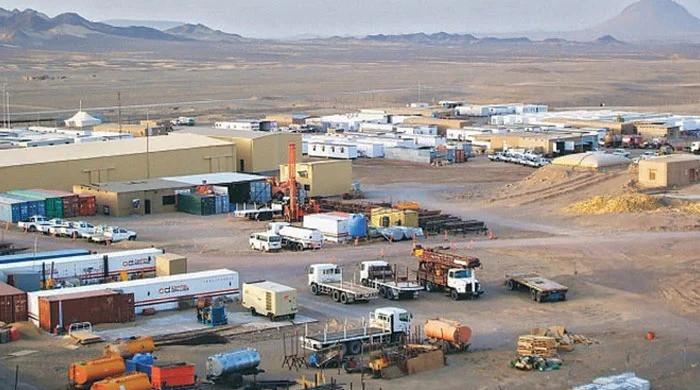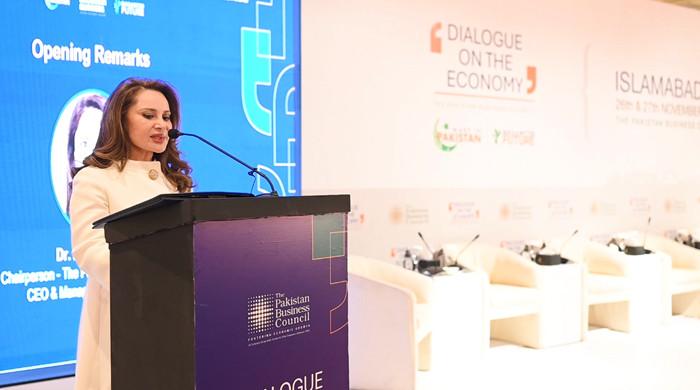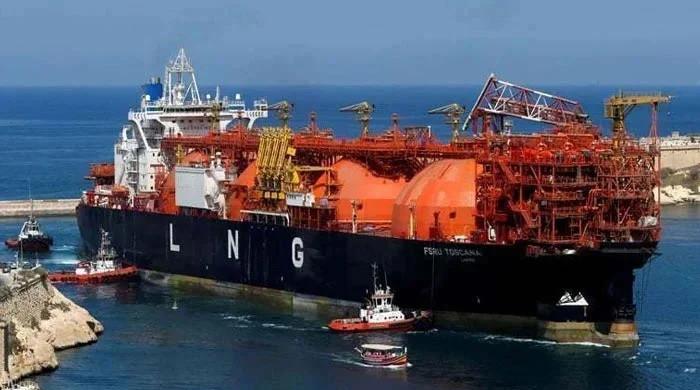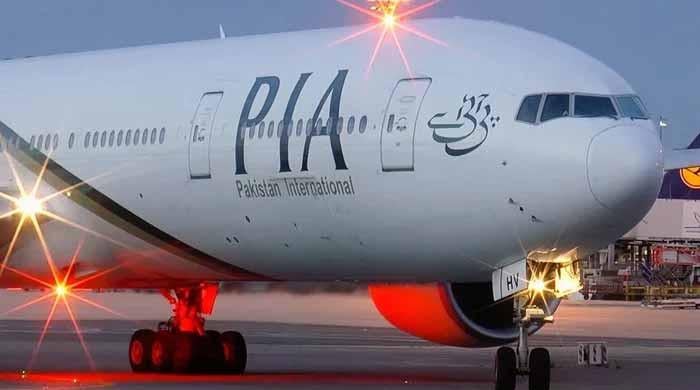Budget 2020-21: Maintaining the balance in the age of the COVID-19 pandemic
According to conservative estimates, COVID-19 has so far inflicted a $14 billion loss on Pakistan's economy
June 09, 2020
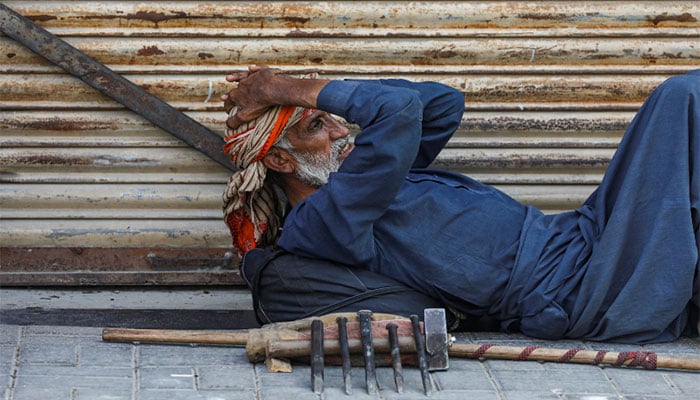
Federal budget is a planning document used to prioritise expenditures, take into account revenue generation, and to maintain a balance between the two. When a country is engaged in an IMF programme, the starting point of budget making is usually the fiscal deficit agreed with the Fund. The revenues are inflated and expenditures deflated in a way that the balance does not exceed the number agreed with the IMF. Pakistan, a frequent borrower from the IMF, is familiar with the exercise.
However, this time the situation is different, given a pandemic that has triggered a global recession. Making a budget in the “new normal” would be a tricky job. According to conservative estimates, COVID-19 has so far inflicted a $14 billion loss on our economy. The GDP growth is likely to hover around -1.5 per cent.
Let us first look at the priority expenditures:
We have already crossed the psychological threshold of the number of corona infections in China. Given that one in four persons tested for the coronavirus so far has been found infected and the fact that the number of fresh infections has yet to peak, one can assume that in the next fiscal year, our chronically underfunded public health infrastructure would be under severe pressure. Ring-fencing the resources to test for coronavirus and care for the patients would thus be a key priority.
In an attempt to find the right balance between saving lives and protecting livelihoods, the federal government has eased the lockdown. It will, however, have to impose ‘smart’ or selective lockdowns, at least in the COVIS-19 hotspots – mostly large cities. This means that economic activities will not be normal. This, in turn has two implications: on the livelihoods side, many people will be out of businesses and jobs and hence, require social protection; while on the revenue side, the government will be unable to collect some of the planned taxes. Providing social protection will be a major priority for the next federal budget.
Life is already complicated when countries have to face health and economic emergencies. In our case, we also face a biblical plague in the form of desert locust that has hit us after three decades.
In the provisional accounts released by the National Accounts Committee a few weeks ago, agriculture was the only sector showing growth. Pakistan is fortunate in that it meets 90 per cent of its food requirements through domestic production. However, the unprecedented locust attack is threatening our rural economies to the tune of Rs 300 billion (if it can be controlled effectively) to Rs 1 trillion (worst case scenario). It is also a potential threat to food security. The damage to ready-to-harvest mango orchards and nascent cotton buds can increase poverty in rural areas and a reduction in exports.
The spending priorities peculiar to this budget will thus include lives (health), livelihoods (social protection) and locust.
On top of it, there are regular nondiscretionary expenditures: debt servicing, defence (and security-related expenditures) and day-to-day running of the government (salaries and pensions).
There are two additional expenditures successive governments have struggled with. This government, too, will have to finance them. They are the so-called circular debt in the energy sector and the loss making public sector organisations. I am skipping a discretionary expense, i.e., non-COVID PSDP, for which I see little fiscal space. Political constraints require that the government also make allocations for some ongoing non-COVID-19 development work.
The federal share from the divisible pool is barely sufficient to take care of debt servicing. The trillion rupee question is: from where will the revenue to meet these expenditures come?
Even before COVID-19, the government was struggling to meet the reduced revenue target of Rs 4,800 billion for the outgoing fiscal year. With the economy swinging between a hard and a soft lockdown and other pandemic uncertainties, collection of revenue will be a big challenge in 2020-21. The government will be unable to introduce significant news taxes for the obvious reason that the economy will badly require stimulus packages.
With the economy swinging between a hard and a soft lockdown and other pandemic uncertainties, collection of revenue would be a big challenge in 2020-21.
The situation is not very promising in terms of non-tax revenue either. State Bank of Pakistan’s profit will dwindle due to a reduction in the policy rate. Reduced policy rate can help the government in domestic debt servicing, but there is a danger that the government may default on its own domestic debt.
Privatisation of some power plants and one-off payment from renewal of 3G/4G licences might raise some non-tax revenue, but how that materialises is quite uncertain amidst a global recession. An out-of-the-box solution might involve deferring government’s domestic debt servicing, just like a concession the country is negotiating with G20 and the Paris Club. This would provide ample cushion for spending on COVID-19 and locust response.
Here it is pertinent to mention that while budget preparation is on, IMF’s second and third review are also in progress. While the government will share its plan for economic recovery, the IMF will emphasise economic stabilisation. My understanding is that while there will be a master document, implementation of the revenue generation measures, and hence primary deficit, will be linked to how coronavirus situation unfolds. The IMF will be flexible on our non-policy fiscal slippages (deficit arising due to the pandemic response). However, it will not be flexible on circular debt or loss-making public sector enterprises. The authorities will have to plug these holes on the expenditure side while being innovative on the revenue generation side.
The last resort to finance the expenditures will be support from multilateral donors and bilateral assistance. The central bank’s projections indicate that Pakistan’s external financing needs during June 2020 will increase by $1.9 billion and it will borrow $15 billion till June 2021.
To cater for COVID-related needs, the multilateral donors and bilateral partners are providing $4.4 billion over the next 15 months to finance Pakistan’s Pandemic Preparedness and Response Plan. This includes $1.38 billion provided by the IMF, World Bank’s $2 billion, and ADB’s $0.8 billion.
Under normal circumstances, the amount of borrowing would have been seen as drastic. However, spending to protect lives and livelihoods is a new norm. States will have to pay businesses and industries for not working (in case of a lockdown) and pay them to enable them to work (during a soft lockdown). This would require a global COVID-19 Marshall Plan for struggling economies.
In a recent writing, Nobel Laurette Abhijit Banerjee has discussed why Somalia, Congo, and Afghanistan could not recover economically despite consistent international assistance. He concludes that lack of government legitimacy and the absence of strong governments are the major factors in their failure. He also argues that economic recovery in Britain, France, and Germany post World War II was not attributable solely to American grants. These countries had emerged from the conflict with strong governments that enjoyed a fair amount of legitimacy and could create a political consensus around development priorities.
If the government is thinking of an economic recovery amidst COVID-19, then apart from mobilising external support, it should try to take the opposition in the parliament in confidence to arrive at a political consensus around development priorities. The opposition should reciprocate by endorsing government suggestions where they agree and coming up with doable alternatives where it sees the need for course correction.
The choice between joining the league of Somalia, Congo and Afghanistan or following in the footprints of Britain, Germany and France rests with our political leaders. They will get to exercise it during the next budget session.
Originally published in The News on Sunday







